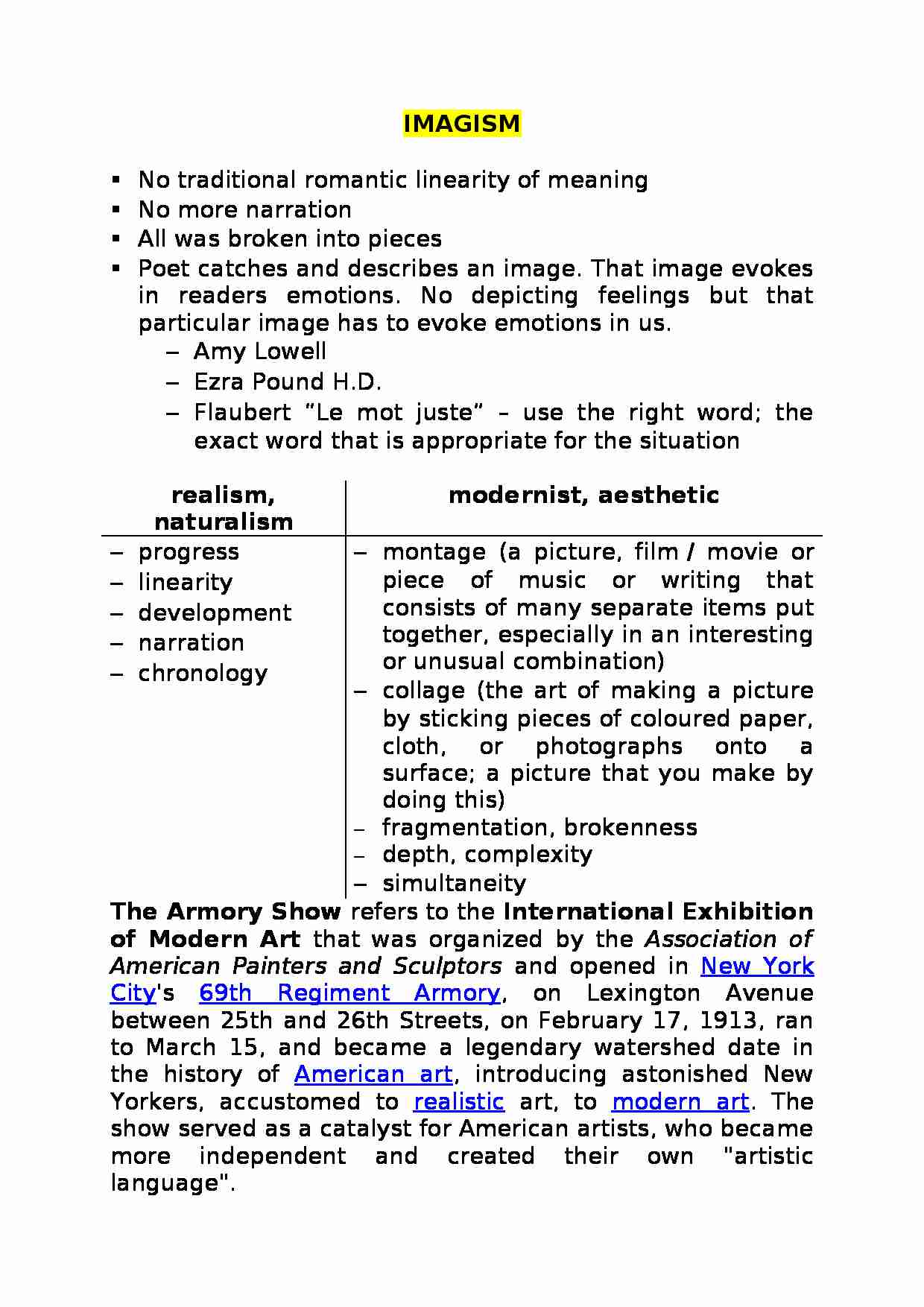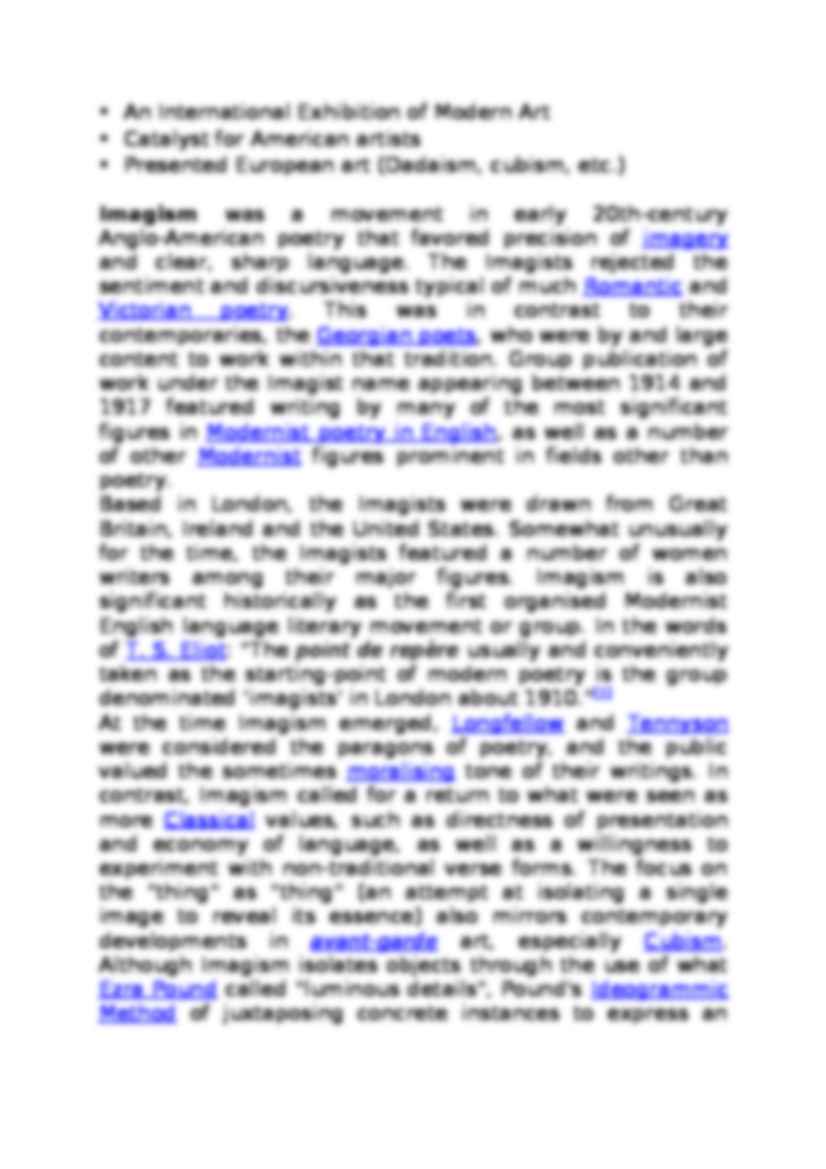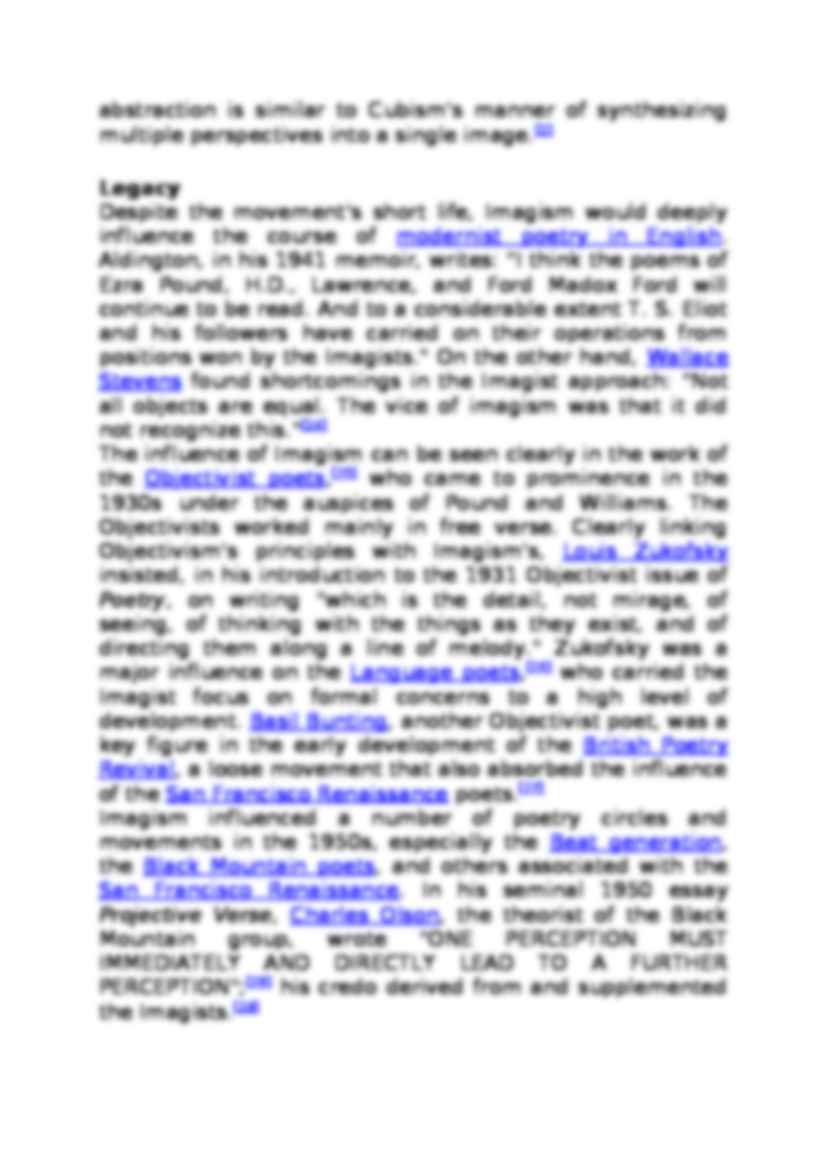To tylko jedna z 7 stron tej notatki. Zaloguj się aby zobaczyć ten dokument.
Zobacz
całą notatkę



Imagism
No traditional romantic linearity of meaning
No more narration
All was broken into pieces
Poet catches and describes an image. That image evokes in readers emotions. No depicting feelings but that particular image has to evoke emotions in us.
Amy Lowell
Ezra Pound H.D.
Flaubert “Le mot juste” - use the right word; the exact word that is appropriate for the situation
realism, naturalism
modernist, aesthetic
progress
linearity
development
narration
chronology
montage (a picture, film / movie or piece of music or writing that consists of many separate items put together, especially in an interesting or unusual combination)
collage (the art of making a picture by sticking pieces of coloured paper, cloth, or photographs onto a surface; a picture that you make by doing this)
fragmentation, brokenness
depth, complexity
simultaneity
The Armory Show refers to the International Exhibition of Modern Art that was organized by the Association of American Painters and Sculptors and opened in New York City's 69th Regiment Armory, on Lexington Avenue between 25th and 26th Streets, on February 17, 1913, ran to March 15, and became a legendary watershed date in the history of American art, introducing astonished New Yorkers, accustomed to realistic art, to modern art. The show served as a catalyst for American artists, who became more independent and created their own "artistic language".
An International Exhibition of Modern Art
Catalyst for American artists
Presented European art (Dadaism, cubism, etc.)
Imagism was a movement in early 20th-century Anglo-American poetry that favored precision of imagery and clear, sharp language. The Imagists rejected the sentiment and discursiveness typical of much Romantic and Victorian poetry. This was in contrast to their contemporaries, the Georgian poets, who were by and large content to work within that tradition. Group publication of work under the Imagist name appearing between 1914 and 1917 featured writing by many of the most significant figures in Modernist poetry in English, as well as a number of other Modernist figures prominent in fields other than poetry.
Based in London, the Imagists were drawn from Great Britain, Ireland and the United States. Somewhat unusually for the time, the Imagists featured a number of women writers among their major figures. Imagism is also significant historically as the first organised Modernist English language literary movement or group. In the words of T. S. Eliot: "The point de repère usually and conveniently taken as the starting-point of modern poetry is the group denominated 'imagists' in London about 1910."
(…)
… derived from and supplemented the Imagists.[29]
Among the Beats, Gary Snyder and Allen Ginsberg in particular were influenced by the Imagist emphasis on Chinese and Japanese poetry. William Carlos Williams was another who had a strong impact on the Beat poets, encouraging poets like Lew Welch and writing an introduction for the book publication of Ginsberg's Howl (1955).
Ezra Pound was an American…
… poem was first published in 1913 and is considered one of the leading poems of the Imagist tradition. Written in a Japanese haiku style, Pound's process of deletion from thirty lines to only fourteen words typifies Imagism's focus on economy of language, precision of imagery and experimenting with non-traditional verse forms. The poem is Pound's written equivalent for the moment of revelation and…
… these considerations came into view. He simply wished to translate his perception of beauty in the midst of ugliness into a single, perfect image in written form.
It is also worth noting that the number of words in the poem (fourteen) is the same as the number of lines in a sonnet. The words are distributed with eight in the first line and six in the second, mirroring the octet-sestet form of the…
... zobacz całą notatkę






Komentarze użytkowników (0)